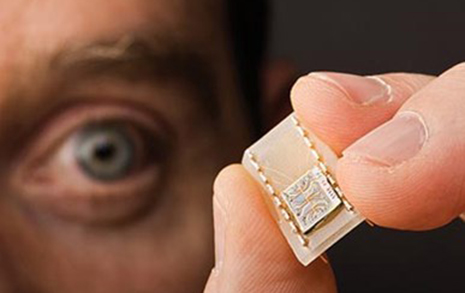Humanity has faced threats to its existence and the health of the planet before, yet we have managed to avoid the apocalypse, or at least postpone it, through ingenuity and invention. This year’s Davos meeting will offer a glimpse of where the next life-, planet- and economy-saving discoveries and products will come from, and where we should invest our talents and treasure to fuel the next generation of transformative technologies.
An accelerating convergence of the biological, physical, and engineering sciences promises a stunning array of new technological solutions. Imagine a coal-fueled power plant that emits only water and clean air. Inside the plant, designer yeast cells transform the carbon dioxide released during the coal’s combustion into raw materials for floor tiles and other construction supplies.
Or imagine a simple and inexpensive urine test that can diagnose cancer, eliminating the need for a surgical biopsy. And, when cancer treatment is needed, its toxic punch hits cancer cells selectively, with far fewer damaging side effects.
Or imagine a future with plentiful food and fuel crops. Through improved seed stocks and more efficient water management, we can have crops that require less water, grow at higher density, and thrive in wider temperature ranges. And data-driven agriculture supply chains will move them more effectively to the market. These advances will enable us to feed and provide power – at a lower economic and environmental cost – to the anticipated 2050 population of nine billion people.
These and other innovations are emerging from the convergence of biology and engineering that is now upon us. A new generation of scientists, engineers, and clinicians, educated more broadly than their predecessors, speak the languages of both and are working together in unprecedented ways. They are conversing across disciplines – not only engineering and biology, but also chemistry, physics, mathematics, and computation – and setting new paths for innovation, from initial discovery to the launch of advanced applications in the marketplace.
The technologies on which many of us depend today arose from a parallel convergence of discoveries in physics and engineering in the early twentieth century. In 1900, the world did not have ready access to electricity, automobiles and aviation, or telecommunications. In much of the world, we now take these conveniences for granted; indeed, we regard them as necessities.
What began as esoteric explorations of the workings of the physical world – the nature of electromagnetism and the atomic structure of matter, for example – became, in the hands of inventors and innovators, telecommunications, new drugs, medical imaging and devices, nuclear power, the computer chip, and the Internet. There are now more connected mobile devices than there are people on the planet.
The products of electronic and digital industries will continue to expand their impact, with “big data,” the “Internet of things,” and the “industrial Internet” becoming increasingly prevalent. Beyond the extension of these twentieth-century technologies, we can also anticipate a new set of transformational industries – as yet nameless – as we advance into the new millennium.
At the same time, just as the twentieth century’s convergence of physics and engineering transformed our lives, the accelerating convergence of biology and engineering is driving unprecedented discoveries that promise to create another platform for innovation, the rise of new industries, and economic growth. The manufacture of fuels and pharmaceuticals already relies on purpose-developed microbes that create sophisticated biological products. New manufacturing processes will incorporate specially designed microbes and computer-characterized compounds into an array of products.
Likewise, the dramatic reduction in the cost of gene sequencing, from roughly $40 million per human genome in 2003 to about $5,000 today, together with a rapid increase in computational power, is boosting the speed, accuracy, and robustness of medical diagnostic tests. That promises not only more timely and effective therapies for cancer, but also similar advances against other currently intractable diseases.
The industries and economic drivers of the twenty-first century will arise from the increasingly combined efforts of biology and engineering. It is this convergence that will help deliver the technological solutions needed to supply enough clean energy, food, and water, as well as better health, to sustain the world’s nine billion people in 2050.
More about:
















































